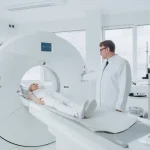Surgical techniques
Today, several surgical techniques are used.
The surgeon’s choice of technique depends on a number of criteria:
The most frequently used surgical techniques are the following: Conventional open surgeryThis is performed by way of an incision that may be dozens of centimeters in length. Procedures include laparotomy for an opening of the abdomen and thoracotomy for an opening of the thorax. Endoscopic or minimally invasive surgeryThis procedure uses small openings in conjunction with an endoscope, a fine instrument equipped with a camera that makes it possible to view the inside of the body on a screen. The endoscope is introduced into the body through natural channels (mouth or anus for the digestive tract for example) or through small incisions of about 1 cm. Using small incisions, specialized surgical instruments are passed through tubes to reach the area to be operated on. Depending on the area of the body concerned, endoscopy takes different names:
Laser surgeryThis form of surgery destroys cancer cells through the action of intense light delivered by a laser. In cancer treatment, laser surgery can be used to:
Although laser surgery cannot be used to treat all types of cancer, it can be useful in the following cases:
Robotic surgeryIn robotic surgery, also known as laparoscopic robot-assisted surgery or computer-assisted surgery (CAD), the surgeon sits at a station near the patient, who is lying on the operating table. The surgeon uses a computer to move robotic arms attached to surgical instruments inside the patient’s body. Robots are able to perform very precise movements.
Sources (in French only): Oncologie chirurgicale Dans quels cas a-t-on recours à la chirurgie ? Quelques mots sur la chirurgie oncologique Chirurgie : types et objectifs Traitement chirurgical |

































